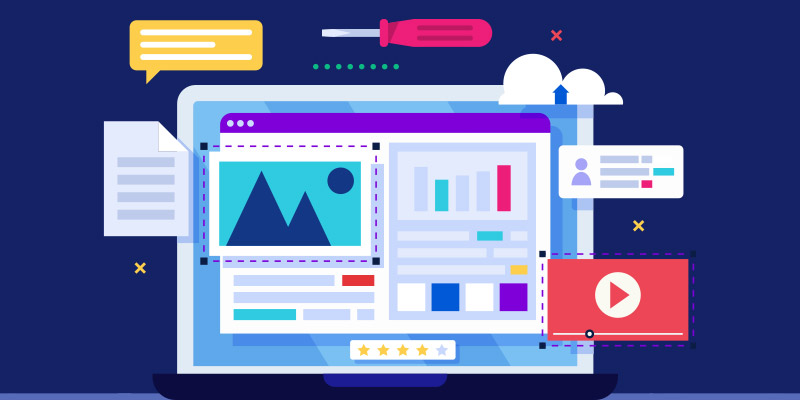Introduction
In the ever-evolving digital landscape, Website Design stands as the bedrock of online presence, shaping the virtual identities of businesses and individuals alike. As we venture into the dynamic realm of 2024, the significance of embracing the latest trends in Website Design cannot be overstated. From the bustling metropolis of Mumbai to the farthest corners of the globe, businesses and Website Development companies alike are tasked with the mission of crafting digital experiences that captivate and engage audiences.
In this digital age, where first impressions are formed in milliseconds, the art of Website Design transcends mere aesthetics. It’s a harmonious blend of creativity, functionality, and user-centricity, where every pixel serves a purpose. From intuitive navigation to visually stunning layouts, websites are the virtual storefronts that beckon users to explore, interact, and transact. With a keen focus on Shopify SEO, Ecommerce SEO, Magento SEO, and WordPress SEO, businesses can ensure their online presence is optimized for search engine visibility, driving organic traffic and enhancing conversion rates.
In this introductory journey into the realm of 2024’s Web Design and Website Development trends, we embark on a quest to unravel the intricacies of modern digital craftsmanship and discover how businesses, whether based in Mumbai or beyond, can leverage these trends to create compelling online experiences that leave a lasting impression.
Minimalism with a Twist
Minimalism remains popular, but in 2024, it’s getting a bold upgrade. Clean, simple designs continue to rule, but expect to see more daring elements like large typography, vibrant colors, and unique layouts. This blend of minimalism with striking accents creates a visually appealing and user-friendly experience.
Dark Mode Dominance
Dark mode is not just a passing trend; it’s becoming a standard feature. The benefits are clear: it reduces eye strain, saves battery life on OLED screens, and gives websites a sleek, modern look. To implement dark mode effectively, ensure your color palette remains consistent and accessible, with sufficient contrast for readability.
Micro-Interactions
Micro-interactions are small animations or design elements that respond to user actions, enhancing engagement and providing instant feedback. Think of hover effects, button animations, or subtle loading indicators. These tiny details can significantly improve the user experience by making your site feel more interactive and responsive.
AI and Machine Learning Integration
Artificial Intelligence (AI) and Machine Learning (ML) are transforming website design. From personalized content recommendations to AI-powered chatbots providing real-time customer support, these technologies are making websites smarter and more intuitive. Leveraging AI can help you create a more tailored and efficient user experience.
3D Visuals and Immersive Experiences
3D visuals add depth and realism to web design, making for more engaging and immersive experiences. Advances in web technologies now allow for smooth integration of 3D elements without compromising site performance. Use 3D graphics for product showcases, interactive storytelling, or to create a visually stunning homepage.
Voice User Interface (VUI)
With the rise of voice search, designing for voice user interfaces (VUI) is becoming essential. Integrating voice commands can enhance accessibility and provide a hands-free browsing experience. Consider adding VUI elements to your site, ensuring they’re intuitive and complement the overall user experience.
Sustainability in Design
Eco-friendly web design is gaining traction as more businesses commit to sustainability. This involves practices like optimizing images for faster loading times, choosing energy-efficient hosting providers, and creating lightweight websites that reduce the digital carbon footprint. Sustainable design not only benefits the environment but also improves site performance.
Augmented Reality (AR) Features
Augmented Reality (AR) is bridging the gap between digital and physical worlds, offering users interactive and engaging content. From virtual try-ons for e-commerce to immersive storytelling, AR can create unique and memorable experiences. Incorporating AR elements can set your website apart and provide added value to users.
Neumorphism and Glassmorphism
Neumorphism and glassmorphism are visual styles that create a soft, tactile interface with subtle shadows and highlights. Neumorphism mimics real-world objects with a modern twist, while glassmorphism uses transparency and blur effects to create a frosted glass look. These styles add depth and elegance to your design, enhancing usability and aesthetics.
Mobile-First Design
With mobile traffic surpassing desktop, prioritizing mobile-first design is more important than ever. This means designing for smaller screens first and scaling up for larger devices. Ensure your site is responsive, fast-loading, and easy to navigate on mobile devices to provide a seamless experience for all users.
Advanced Typography
Typography plays a critical role in web design, and 2024 will see the rise of custom fonts and creative typography. Bold, unique fonts can enhance your brand identity and improve readability. Experiment with different font styles, sizes, and colors to find what best represents your brand and resonates with your audience.
Inclusive Design
Inclusive design focuses on creating websites that are accessible to everyone, regardless of ability. This includes following accessibility standards, such as providing alt text for images, ensuring keyboard navigation, and designing with color contrast in mind. Inclusive design not only broadens your audience but also enhances user satisfaction.
Bold Color Schemes
Vibrant, eye-catching color schemes are making a comeback. Bold colors can make your website stand out and evoke specific emotions. Use color strategically to guide users’ attention and create a memorable visual experience. Just be mindful of color harmony and contrast to maintain readability and aesthetic appeal.
Scrolling Transformations
Dynamic scrolling effects, such as parallax scrolling, can create a more engaging browsing experience. These effects add a layer of interactivity, drawing users into the content as they scroll. However, it’s important to use them sparingly to avoid overwhelming the user and to ensure they don’t impact site performance.
Conclusion
Staying ahead of website design trends is key to maintaining a modern, user-friendly site. The trends for 2024 emphasize simplicity, interactivity, and personalization. By integrating these trends thoughtfully, you can enhance user experience, boost engagement, and keep your website looking fresh and innovative.

